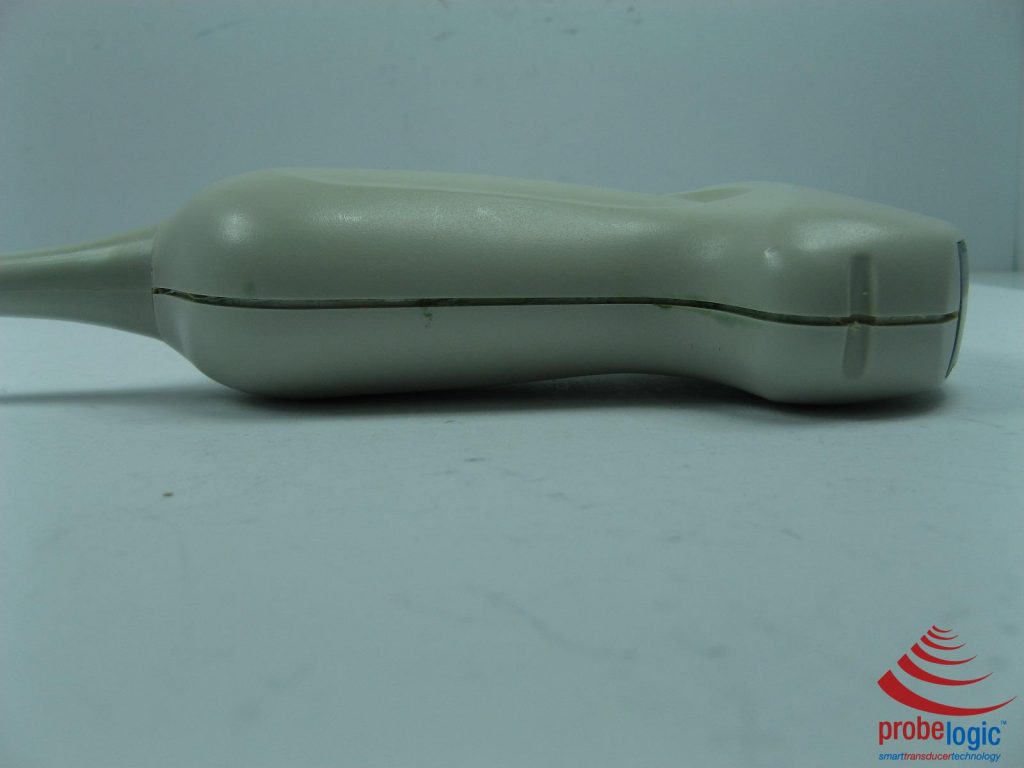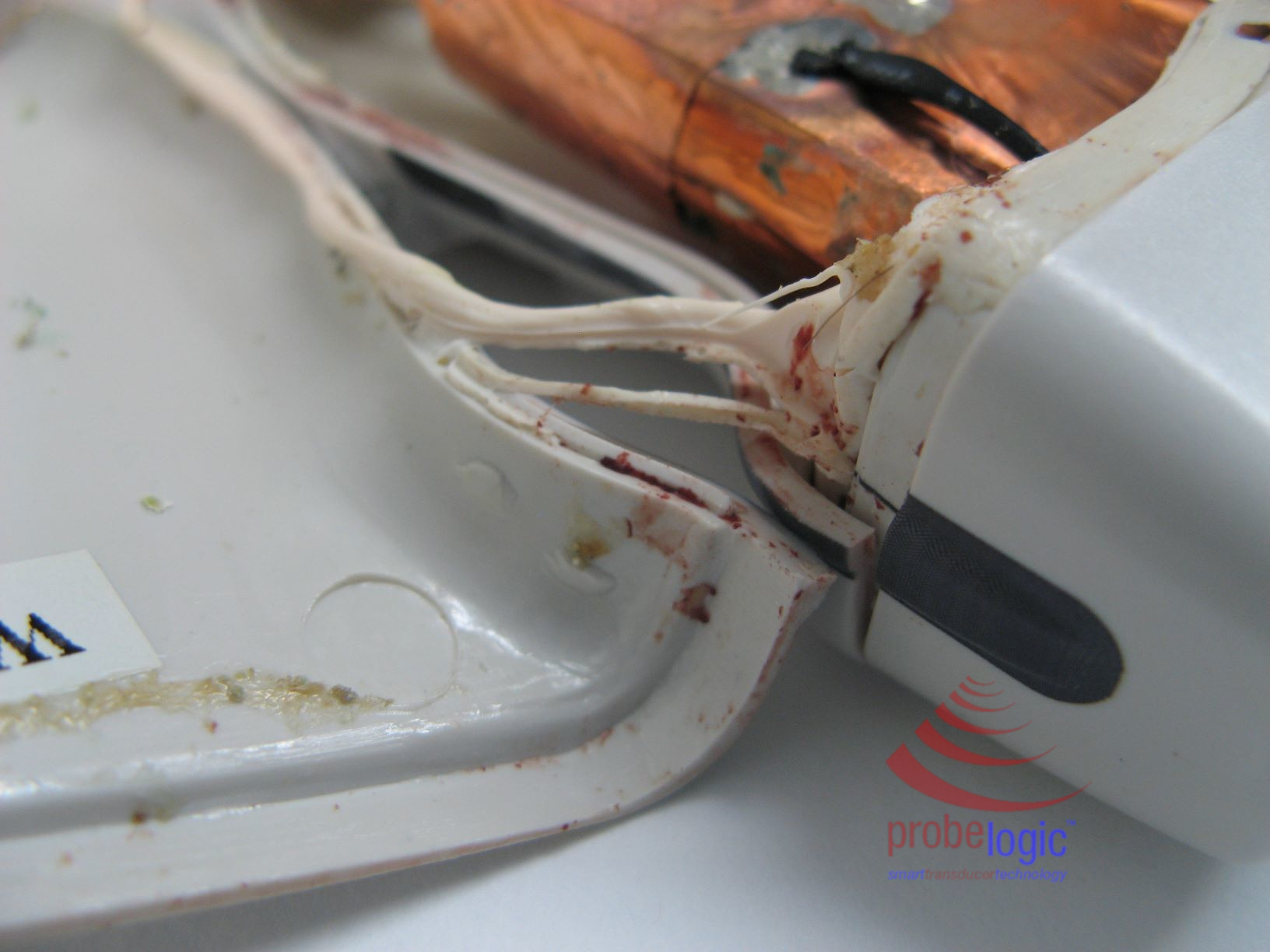Do you really need to do it? But why?
Lets start by looking at what can happen if you continue using your ultrasound probe when the seals have deteriorated and allow fluid ingress into the head of the probe. Here is a couple of pictures of a probe with the seams slightly seperating. The resultant fluid and corrosion inside has caused catastrophic corrosion for the electronics but also is a massive cross contamination risk.
For the full article on this case study, click here
Here is another probe that really demonstrates the cross contamination hazard associated with this kind of failure (click here for more images of this probe):
Sealant missing around an array and lens can also be of particular importance because if fluid gets in, severe damage due to corrosion can be experienced. here is a couple of examples:
In addition to the obvious cross contamination hazard, there is an electrocution hazard presented by a damaged lens. In this video we show a scenario with a double fault. The lens of the probe has a failure and so does the ultrasound machine. Glad this was in a controlled environment and not on a patient!
For more information from this article, click here
Frequently Asked Questions:
If you require any assistance for anything ultrasound related. Don’t hesitate to contact us.



